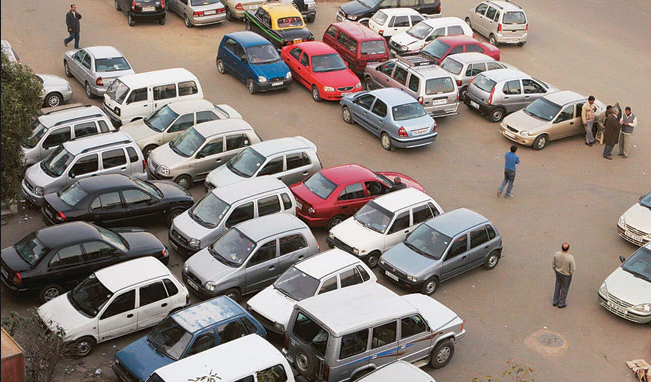How This Technology Can Solve Parking Problems In India
Indira Datta - Nov 01, 2018

Parking search can be a problem not only in India but also in many other countries in the world as the population grows.
- Delhi Is The World’s Most Polluted Capital City For Three Years In A Row
- Indian Farmers Install High-Tech, Night-Vision CCTV Cameras To Protect Themselves
- Looking For The Best Electric Bike In India 2021? Take A Look At These
Parking search can be a problem not only in India but also in many other countries in the world as the population grows. In the United States, an Indian student has worked on the invention of an algorithm that allows users to search for parking spaces by analyzing large data and spatial data. This saves a lot of money and time for drivers.
A student studying at The University of Alabama (UAH) - Sai Nikhil with his innovative invention won the second prize for the Science and Technology Open House competition in 2018.
Sai graduated with a degree in communications and electronics engineering from the Birla Institute of Technology and Science in Pilani. He hopes to be able to develop and improve the mobile application that helps drivers easily find the available parking location called InstaPark. This way, users can see the empty parking space or other vehicles parking in real time.

The solution for Parking Cars
Sai's discovery is based on in-depth learning techniques and large data analytics to guide the drivers driving to an empty space directly to park.
The process of analyzing large data is extremely complex, including examining large and diverse data sets for exploring information such as unspecified correlations, hidden patterns, customer preferences, and market trends.
Synthesizing the knowledge learned and research, Sai formed the idea as soon as the university was moved to the parking lot area last fall.
According to InstaPark's creator, 11 am - 1 pm is rush hour for the car park when faculty members and students are likely to have troubles finding a parking spot. Consequently, that causes them to waste time as well as fuel, which contributes to pollution. Sai concludes that it is vital that people find their own parking spots as soon as they enter the parking lot.
The thing left to do is finding the gaps and then guiding the driver to the right place. Especially the False does not want to spend too much on buying, installing and maintaining expensive sensors in the ground like today's market applications.
An Assistant Professor of Computer Science - Vineetha Menon is wrong to help fulfill his plan. Menon is also the director of Big Data Analytics Lab at The University of Alabama so he has access to the high-capacity calculator that Sai needs to build and practice to apply on his model. In addition, he took data based on the parking lot given by the Federal University of Parana in Brazil.
Menon said:

Featured Stories

Features - Jul 01, 2025
What Are The Fastest Passenger Vehicles Ever Created?

Features - Jun 25, 2025
Japan Hydrogen Breakthrough: Scientists Crack the Clean Energy Code with...

ICT News - Jun 25, 2025
AI Intimidation Tactics: CEOs Turn Flawed Technology Into Employee Fear Machine

Review - Jun 25, 2025
Windows 11 Problems: Is Microsoft's "Best" OS Actually Getting Worse?

Features - Jun 22, 2025
Telegram Founder Pavel Durov Plans to Split $14 Billion Fortune Among 106 Children

ICT News - Jun 22, 2025
Neuralink Telepathy Chip Enables Quadriplegic Rob Greiner to Control Games with...

Features - Jun 21, 2025
This Over $100 Bottle Has Nothing But Fresh Air Inside

Features - Jun 18, 2025
Best Mobile VPN Apps for Gaming 2025: Complete Guide

Features - Jun 18, 2025
A Math Formula Tells Us How Long Everything Will Live

Features - Jun 16, 2025
Comments
Sort by Newest | Popular